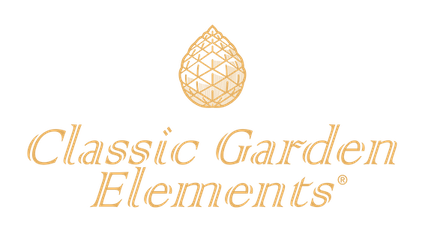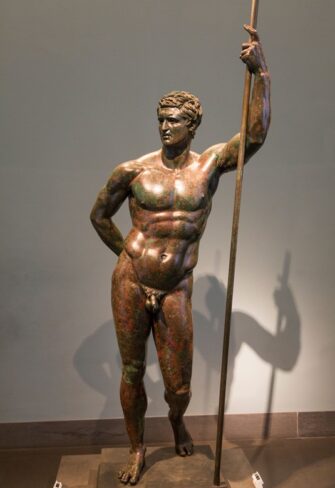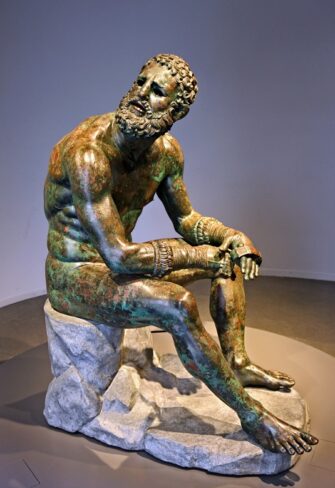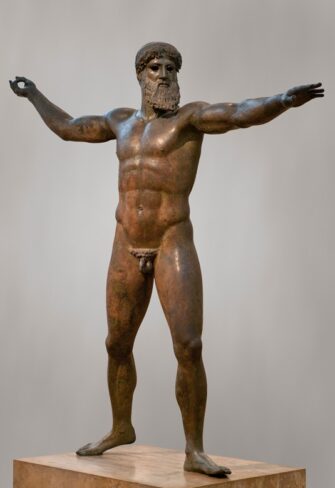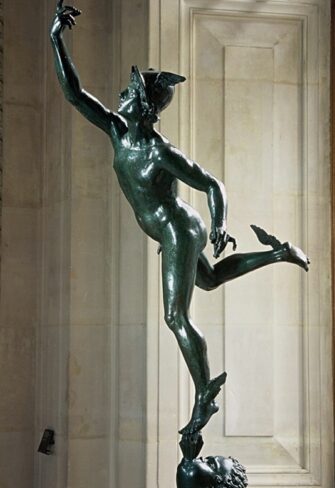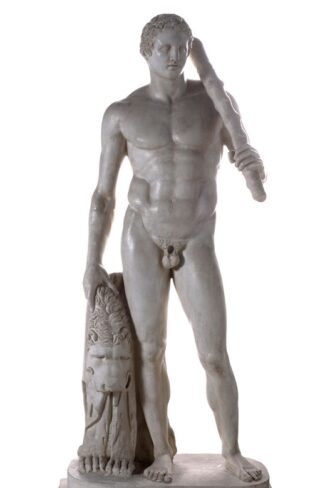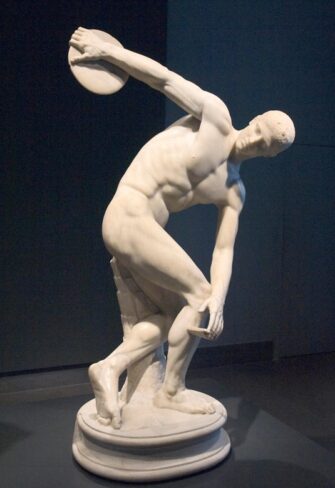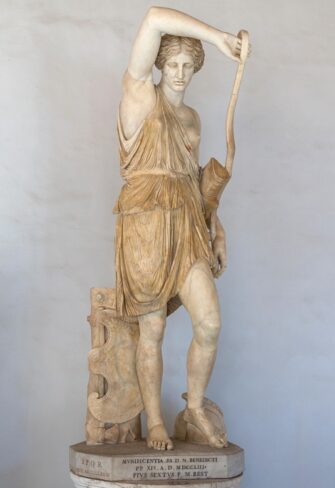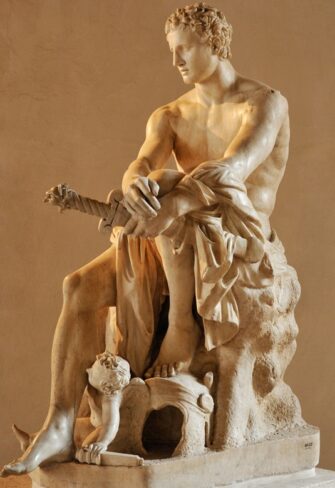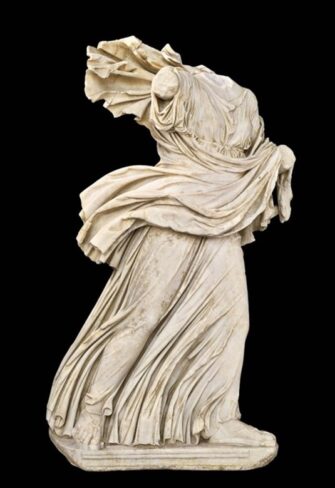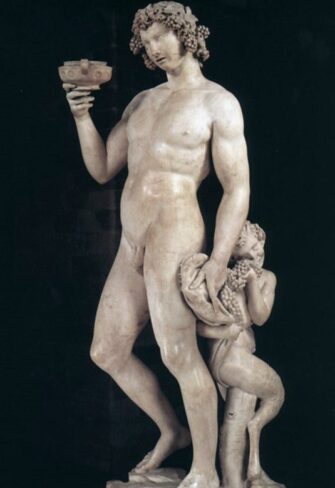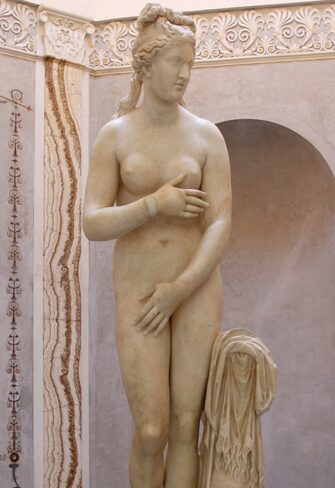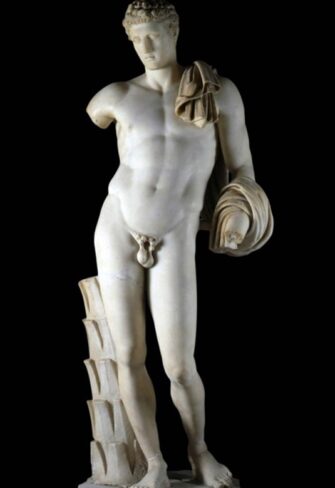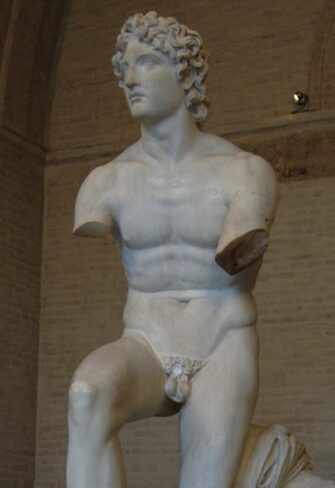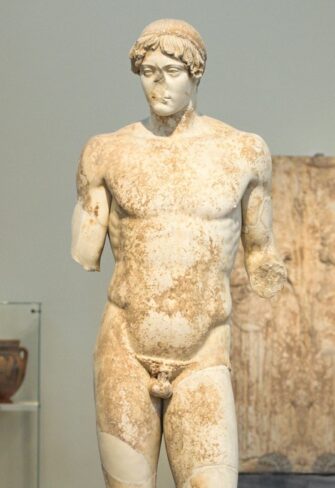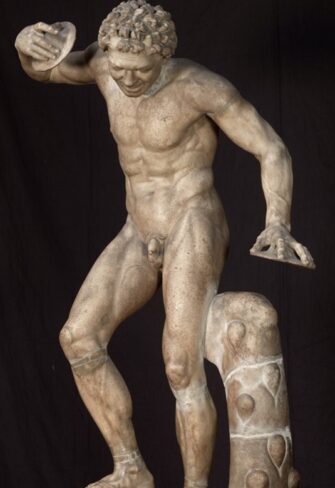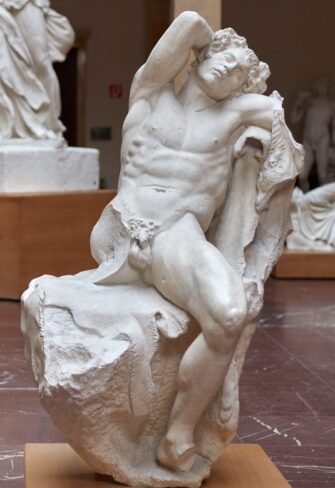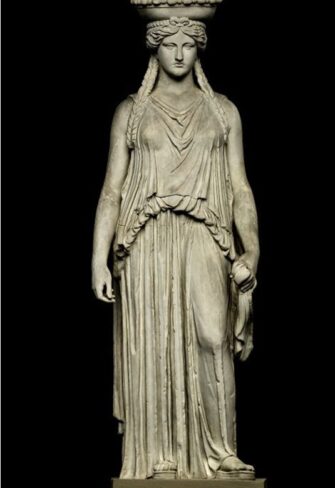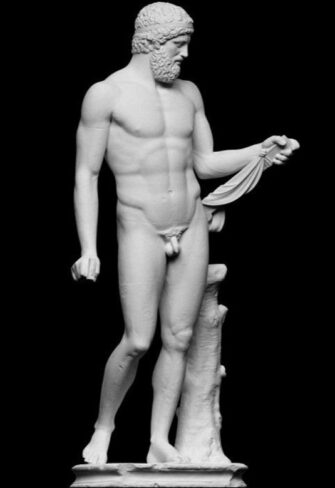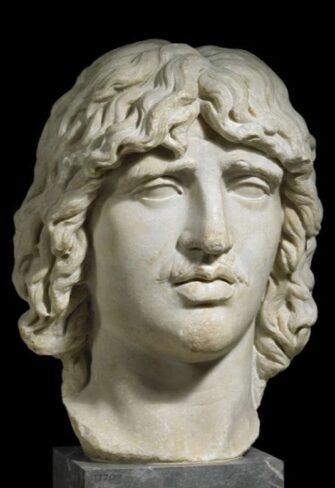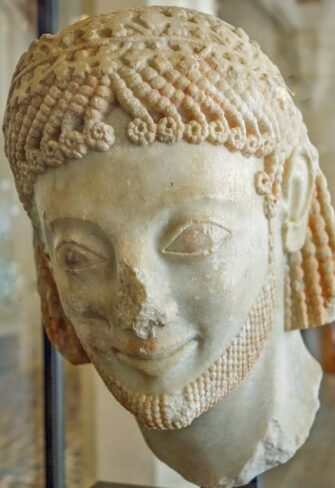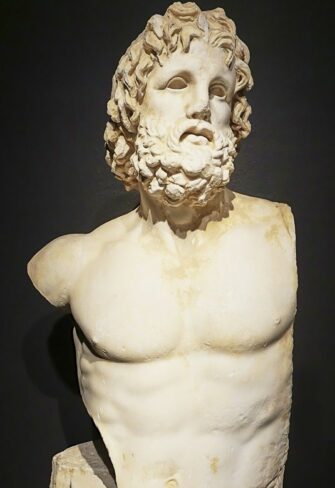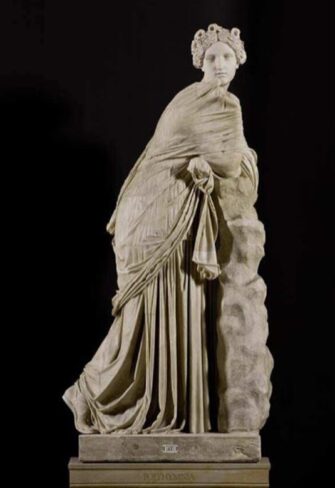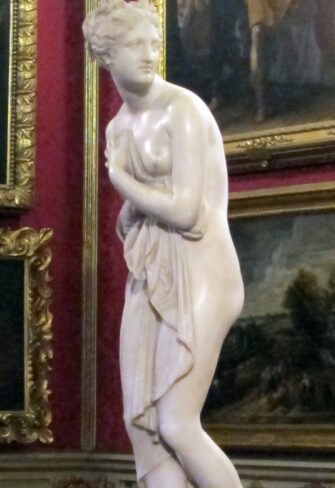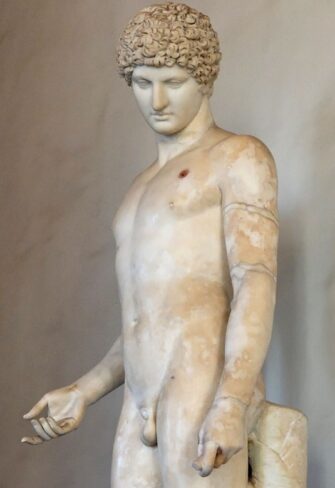LIFE-SIZED STATUES FROM CLASSICAL ANTIQUITY
Showing 1–24 of 56 results
-
Hellenistic Prince
£52,900.00 -
Boxer at Rest
£52,900.00 -
Artemision Bronze
£52,900.00 -
Mercury by Giambologna
£8,900.00 -
Lansdowne Heracles
£52,900.00 -
Discobolus Lancellotti
£43,800.00 -
Amazon Mattei
£52,900.00 -
Ludovisi Ares
£57,400.00 -
Chiaramonti Niobid
£52,900.00 -
Bacchus by Michelangelo
£43,800.00 -
Capitoline Venus
£34,400.00 -
Belvedere Hermes
£43,800.00 -
Rondanini Alexander
£43,800.00 -
Apollo Omphalos
£34,400.00 -
Dancing Satyr
£34,400.00 -
Barberini Faun
£106,000.00 -
Erechtheion Caryatid
£52,900.00 -
Standing Man – Munich King
£52,900.00 -
Head of a Barbarian Chief-Arminius
£11,300.00 -
The Rampin Rider
£11,300.00 -
Torso – Asklepios from Munichia
£11,300.00 -
Polyhymnia Muse
£34,400.00 -
Venus Italica by Canova
£34,400.00 -
Capitoline Antinous
£43,800.00
Commission us for Finest Ancient Sculptures – Life-Size – Museum Quality – Cast in Bronze or Marble
In our online shop, we offer something unique to friends of ancient art: replicas of over fifty of the most beautiful sculptures from classical antiquity. Life-sized and cast in bronze based on plaster casts of museum originals, our bronze statues and busts boast museum quality and are esteemed by interior designers, garden designers, and art experts worldwide. Film studios utilize them as authentic decor, and the originals are displayed in museums around the globe.
Locations for the Placement of Ancient Statues
In exceptionally designed gardens and parks, alongside high horticultural artistry and exceptionally beautiful design, the use of top-notch furnishings often shines. Whether it’s furniture or statues and sculptures. Now original antique statues are not or very rarely available for sale. Since their rediscovery in the Renaissance, costly replicas have such been made for castles, their parks, and concurrently for the mansions of the bourgeoisie who have attained great wealth. During this time, a canon for the placement and positioning of these artworks formed and developed into modern times. In our online shop, you’ll find an overview of particularly beautiful locations for ancient statues. Additionally, we provide you with an overview of some publicly accessible gardens and parks, each boasting an impressive collection of ancient sculptures, along with specific details on where each statue can be seen.
Historical Significance of the Offered Replica Sculptures
The statues of ancient Greece, primarily bronze statues, continue to be culturally significant for our Western civilization.
After Rome rose to world power, a large number of these Greek artworks made their way to Rome, some plundered, some acquired, and were copied and reinterpreted in Rome. A multitude of precise copies of the most beautiful works of ancient Greece were created for the Roman art market. In almost all cases, the lost Greek bronze originals are only known to us through their Roman marble copies.
However, most works of the ancient world have likely been lost forever during the turmoil and dark centuries following the collapse of the Roman Empire. Many of the most beautiful statues were destroyed or vandalized even before then by fanatical Christians. Bronze statues were melted down in times of war, marble statues were left to their fate after the decline of ancient sites, used as building materials, or burnt into lime in early medieval lime kilns.
Of the over fifty replicas of ancient statues offered in our online shop, only nine statues are based on surviving original ancient Greek bronze statues. All other replicas offered are based on Roman marble statues that were created based on a Greek original bronze.
Plaster Casts for Casting Statues and Busts
The basis for a perfect replica of the original is a plaster cast of the original. These plaster casts often date back two centuries. Many of them were taken from the originals found in Rome, mostly from the mid-18th century to the early 19th century. They were then exhibited for study purposes, mostly at a university, in so-called plaster cast collections. They often also came into private ownership, especially when the purchase of the original was too expensive or the original was not for sale.
Famous sculptors of the mentioned era, such as Bertel Thorvaldsen, Antonio Canova, Andreas Schlüter, Karl Friedrich Schinkel, and others, had their own plaster cast collections of the antiquities found at that time. These served as teaching aids for their students and as templates for their own works. These plaster casts were often supplemented and completed if the ancient original was not completely preserved.
Bronze Casting in the Lost Wax Process
The lost wax process is a method used to cast complex metal shapes. It is thousands of years old and is also used for the bronze casting replicas offered here.
The plaster cast serves as the basis for the required casting mold. Based on the data from the plaster cast, we create a plastic model. The plastic model is meticulously compared with the plaster cast and photos of the original and, if necessary, adjusted. When everything is perfect, the negative casting mold is taken from this plastic model. Then, liquid bronze is poured into this negative mold to create a positive bronze sculpture. Each of these steps is meticulously monitored to ensure that the cast replica matches the plaster cast and the original in the museum 1:1.
For bronze casting, we use bronze composed of at least 90% to 95% copper (CU) and 5% to 10% tin (SN). The exact composition varies within this range depending on the size and complexity of the statue. The amount of tin added influences the castability, corrosion resistance, and tensile strength of bronze castings. This alloy closely matches most of the ancient bronze alloys passed down through the ages and has proven itself over millennia. Bronze artifacts found in Pompeii and analyzed by the Goethe University Frankfurt in 1998 almost consistently had a composition of 90% CU with 10% SN. They also had lead additives in many cases, ranging from 0.01 to 0.02%.
Marble Casting and Sculpture Carving by the Sculptor
In addition to traditional bronze casting, we offer two other methods for replicating the statues and busts shown here: marble casting from powdered genuine marble and sculptors carving the statue from a single marble block. If this form of work is suitable for your replica statue, please feel free to contact us. We welcome your email or call.
Buying Marble Casting Sculptures made from Powdered Genuine Marble
Most ancient sculptures are visually known to us through Roman sculptures carved in marble. Mostly created based on a then-still-existing Greek original from bronze casting. And now exhibited in the most beautiful museums that Europe has to offer. So there is indeed a desire to buy one’s own replica in marble rather than bronze. An easy and absolutely precise method for creating museum-quality replicas is called “cast marble.”
In this process, a marble block is ground into very small grains. The resulting marble sand is then liquefied, mixed with adhesives, poured into molds, and hardened there. The process has been known since the mid-19th century and has been continually refined. To ensure that the resulting cast marble statue looks like real marble (from which it is made), the choice of the right marble, the right grain size, and the perfect recipe for the added adhesives are essential.
For the production of the replica statue, we use the finest white marble. We have plaster casts of the original to make the molds. We achieve stability, weather resistance, and a brilliant surface of artificial marble with the best mixture of ground marble and chemical adhesive additives. We are happy to provide you with a sample.
Parallel Materials available on the Market
In garden centers, there are often casts made of concrete (cast concrete) or similar materials available. Mostly, these are statues of ‘David’ and ‘Venus’. The casting templates for these are usually of such poor quality that they give a tacky impression of the statues. Additionally, the sizes are not original. Thus, the initial impression of these concrete statues doesn’t bode well.
Recarving the Sculpture by Marble Block Sculptors
As a special service, we offer to have the replica recarved by a sculptor from a marble block of your choice. Depending on the complexity of the requested statue, this is a demanding task. Ultimately, it can only be mastered by sculptors who practice this daily in regions and environments where this highly specialized form of sculpting has been cultivated for generations. Such sculptors are found today in very few places, including Italy and China. In Italy, Carrara has been the center since ancient times, while in China, there are two provinces south of Beijing. Similar to Carrara, they have their own marble of what’s known as imperial quality for the Beijing court and a sculpting tradition that has been nurtured over countless generations.
It’s not uncommon for ancient statues discovered since the Renaissance to be reworked by famous sculptors of European royal courts. Just as the ancient Romans reworked statues of the ancient Greeks, creating copies that were often considered more attractive than the original, which were then copied or plaster casts made of them. As an example, the so-called Uffizi Wrestlers can be mentioned. On behalf of Le Nôtre, the French sculptor Philippe Magnier freestyled a replica of the group from a marble block for Versailles around 1685. This marble copy was so popular that plaster casts were made of it, rather than of the original in the Uffizi. It now stands in the Louvre in Paris.
Creating a replica from a marble block faithful to the historical model requires tradition, skill, and an understanding of the formal repertoire, canon of forms, of these special statues. The sculptors commissioned by us possess these qualifications. Usually, a new plaster cast is first created as a working template for the sculptor. Often, a cast of the most difficult part suffices, often that’s the head. Some sculptors additionally create their own model from clay, mostly of the head, to maintain this special connection to the statue and the sculpting process.
What we offer here is, therefore, a replica, but an artistically freely created, individual replica statue made of genuine marble.
Identifying Faulty Replicas
Replicas of statues and busts that are cast without a precise plaster cast or accurate scans only reproduce the outline of the statue, more or less. Often, this isn’t the case, especially if proportions or sizes have been altered for cost reasons. But even the outline lacks the sharpness of the original. What’s even worse is that the entire statue completely lacks fine structure. Musculature, hair, eyes, mouth are without depth, without sharpness. It’s all smoothed and rounded like with sandpaper, and appears flat, devoid of expression.
Why Aren’t All Replica Statues Priced in the Online Shop?
A whole series of bronze statues offered by us in our online shop are priced as “Price on request” or without a price. The reasons for this are diverse.
Choice of Art Foundry for the Replica Statue
Especially large statues can only be cast in highly specialized art foundries. These art foundries operate worldwide. They are often booked with major special orders for two to three years and therefore not immediately available for delivery.
Lack of Plaster Casts for the High-Quality Reproduction
For some statues and busts, especially those found in recent times, there is still no plaster cast and one would have to be made first. Nowadays, this is rarely done to avoid disturbing the often-present color remnants of the former ancient painting on many statues.
Working with 3D Scans for Reproduction
Here, a 3D scan could achieve quite perfect results. In practice, however, this usually doesn’t work. Because the permission to scan is usually only obtained with great effort and the best connections, if at all. So, the only option is to compile an extensive photo collection of these usually world-famous statues, from which a scan is then created. The scan is then improved by archaeological restoration specialists based on the photo templates, so that ultimately a usable scan is obtained that largely corresponds to the original. This scan is then printed in life-size and revised by a highly experienced sculptor specializing in the restoration of ancient sculptures. The head of the statue is often the most difficult part, especially if it has rich, deeply curled hair that the scanning camera doesn’t capture accurately enough in its depth.
Comparison of the Replica on Site with the Original
We usually successfully resolve this issue of “heads with rich locks of hair” by taking the scanned, printed head to the museum and requesting permission to compare it with the original. However, this is not always allowed. In some museums, our sculptor was however allowed to carry out fine work on the head on-site or at least mark affected areas.
Subsequent Chiselling in the Casting Sculpture
A number of statues we offer feature fine chiselling, for example, for a stubble or a headband or decorative patterns on the original preserved base. These chisellings are not clearly visible in the plaster cast or the cast did not catch them at all. Here, we work with highly experienced chisel masters who create the chisellings based on image references with their fine instruments.
Conclusion
Hence, there are manifold and often entirely different reasons why we price some statues in our online shop as “Price on request.”
